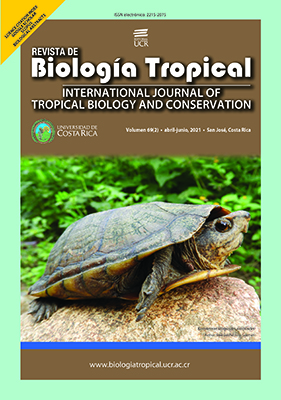Abstract
Introduction: The organoleptic qualities of aromatic species and their derived products are directly related to some characteristics of flavor, color and nutritional value and depend largely on their genetic origin and content of secondary metabolites. Objective: the antioxidant activity of different genotypes of Theobroma spp. from Mexico was evaluated in order to distinguish promising qualities for genetic improvement, and to differentiate phylogenetic traits, considering biochemical variables. Methods: the amount of phenols, flavonoids and antioxidant activity was determined by ABTS and DDPH, in addition to the content of anthocyanins, theobromine and caffeine in four species of Theobroma L., and 50 genotypes derived from T. cacao. The results were analyzed using an analysis of variance, means test, principal component analysis and cladistic analysis. Results: there are highly significant differences between genotypes. The phenol content ranged from 7.5-85 mg g-1; flavonoids 6.57-69.6 mg g-1, antioxidant activity by ABTS of 17.3-86.1 and by DDPH of 40.0-53.3; anthocyanin content of 0.01-3, caffeine of 1.8-6.7-and theobromine of 2.9-9.8 mg g-1. Principal component and cladistic analysis helped explain the variation found and distinguish evolutionary characters and phylogenetic brotherhoods. The variation in content of phenols, flavonoids, antioxidant activity, anthocyanins, theobromine and caffeine was mainly due to the degree of domestication, while for the group of genotypes derived from T. cacao (forastero, trinitario and criollo) it was the origin of the seeds. Conclusions: the degree of domestication influences the content of phenols and antioxidant capacity. The results suggest that the evaluated variables can help to form criteria for genetic improvement in the complex derived from T. cacao oriented to the selection of higher phenol content and greater antioxidant activity.
##plugins.facebook.comentarios##

This work is licensed under a Creative Commons Attribution 4.0 International License.
Copyright (c) 2021 Jorge Cadena Iñiguez, Carlos Hugo Avendaño Arrazate, Eduardo Campos Rojas, Cesar Uriel López Palestina, Misael Martínez Bolaños, Juan Francisco Caballero Pérez, Moisés Báez Alonso, Rafael Ariza Flores


